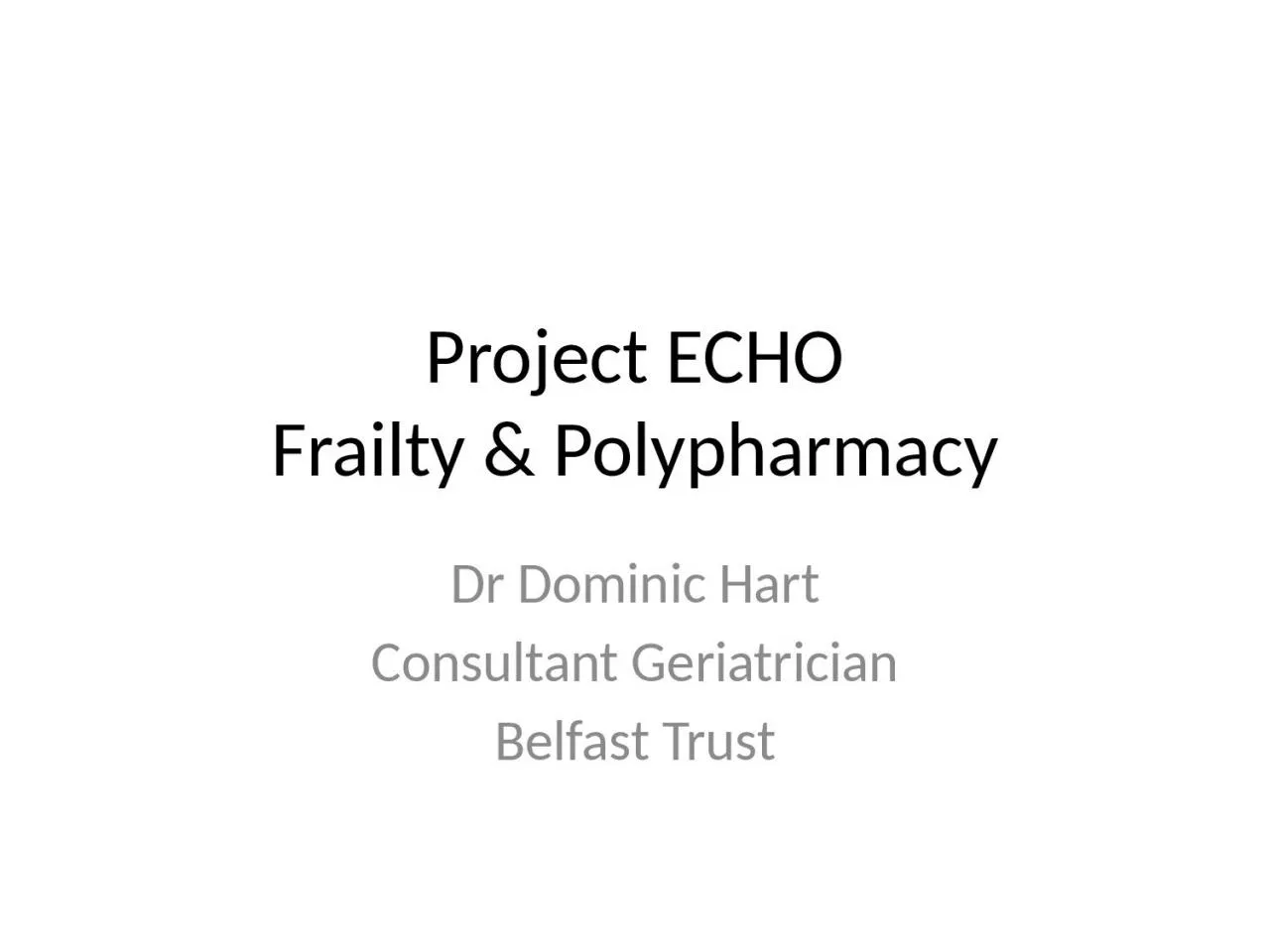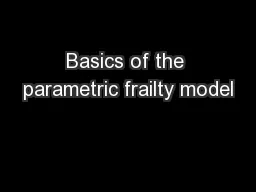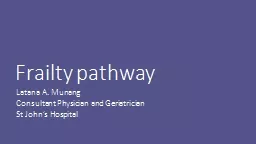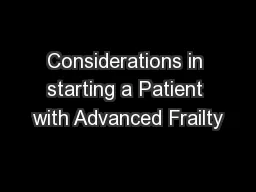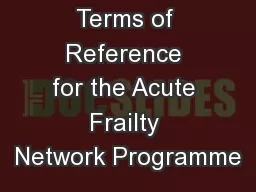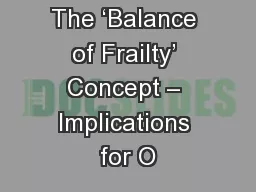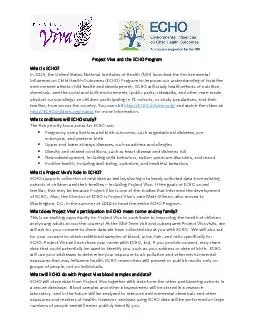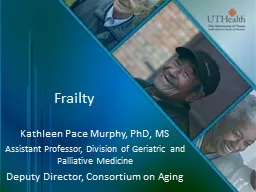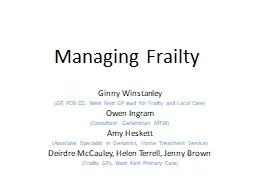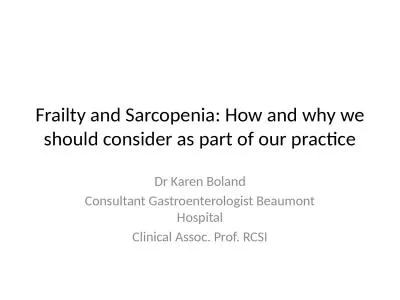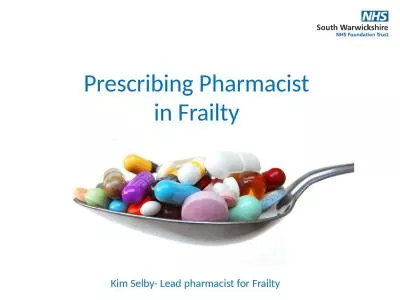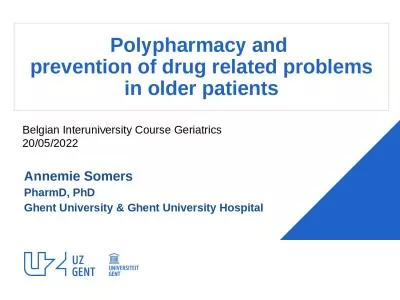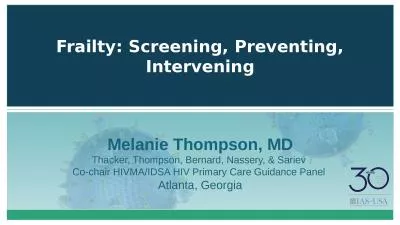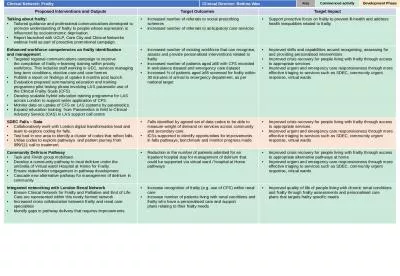PPT-Project ECHO Frailty & Polypharmacy
Author : bethany | Published Date : 2024-03-15
Dr Dominic Hart Consultant Geriatrician Belfast Trust Frail Frail What is Frailty A state of increased vulnerability to poor resolution of homeostasis after a stressor
Presentation Embed Code
Download Presentation
Download Presentation The PPT/PDF document "Project ECHO Frailty & Polypharmacy" is the property of its rightful owner. Permission is granted to download and print the materials on this website for personal, non-commercial use only, and to display it on your personal computer provided you do not modify the materials and that you retain all copyright notices contained in the materials. By downloading content from our website, you accept the terms of this agreement.
Project ECHO Frailty & Polypharmacy: Transcript
Download Rules Of Document
"Project ECHO Frailty & Polypharmacy"The content belongs to its owner. You may download and print it for personal use, without modification, and keep all copyright notices. By downloading, you agree to these terms.
Related Documents

